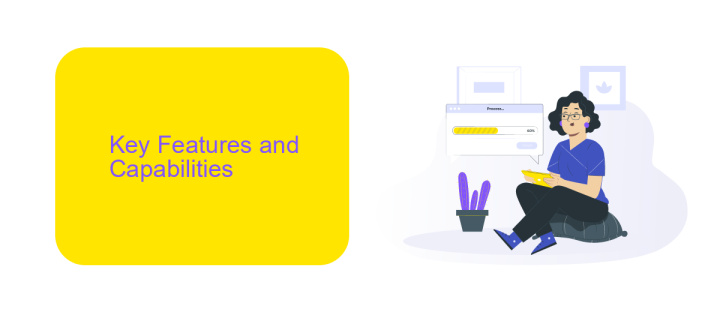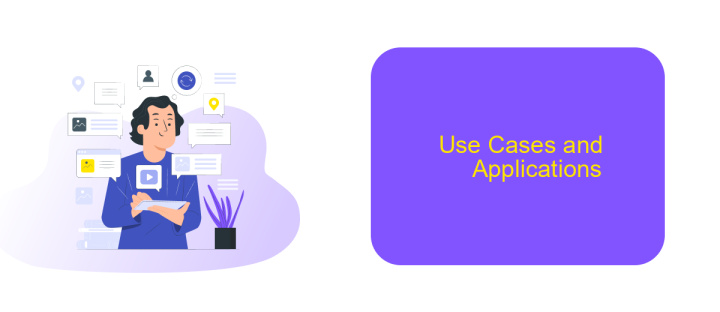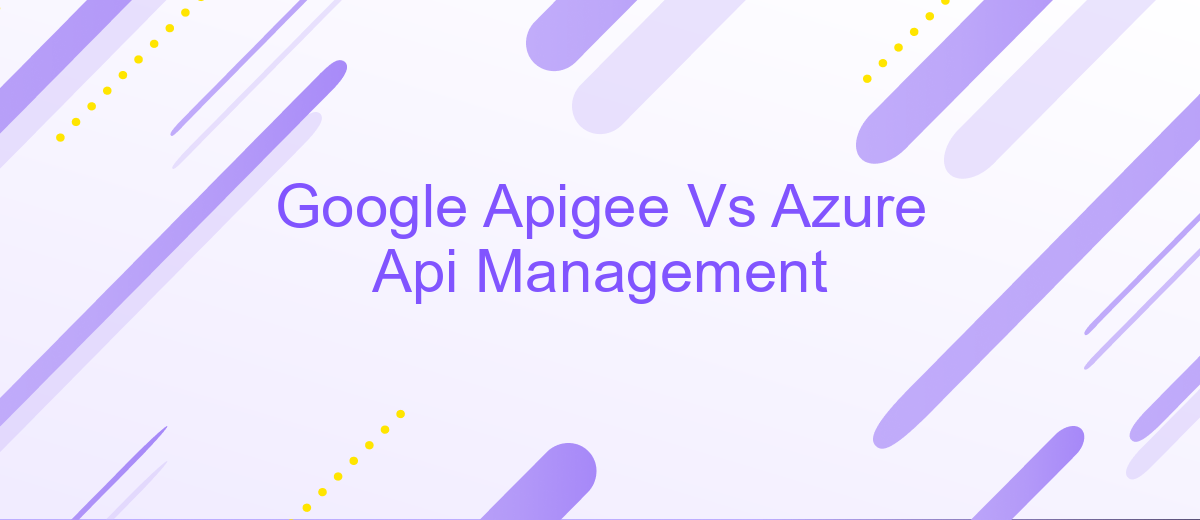Google Apigee Vs Azure Api Management
In the rapidly evolving landscape of digital transformation, API management platforms have become crucial for businesses to streamline their operations and enhance connectivity. Google Apigee and Azure API Management are two leading solutions in this domain. This article delves into a comparative analysis of these platforms, highlighting their features, strengths, and potential use cases to help you make an informed decision.
Introduction
In the rapidly evolving world of digital transformation, API management has become a critical component for businesses looking to streamline their operations and enhance connectivity. Google Apigee and Azure API Management are two leading solutions in this domain, offering robust features to manage, secure, and analyze APIs. Choosing the right platform can significantly impact your organization's ability to innovate and integrate seamlessly.
- Google Apigee: Known for its comprehensive API lifecycle management, advanced analytics, and developer-centric approach.
- Azure API Management: Offers seamless integration with other Azure services, strong security features, and scalability for enterprise needs.
- ApiX-Drive: A versatile tool that simplifies the integration process, enabling businesses to connect various services without extensive coding.
This article will delve into a detailed comparison of Google Apigee and Azure API Management, highlighting their key features, advantages, and potential drawbacks. Additionally, we will explore how tools like ApiX-Drive can complement these platforms to further enhance your API integration strategy.
Key Features and Capabilities

Google Apigee and Azure API Management both offer robust features for managing APIs, but they cater to different needs and preferences. Apigee provides advanced analytics, developer portals, and monetization options, making it a strong choice for enterprises looking to gain insights and revenue from their API programs. Its security features, including OAuth, JWT, and encryption, ensure that APIs are well-protected against threats. Additionally, Apigee's microservices architecture support and seamless integration with Google Cloud services make it a versatile option for modern applications.
On the other hand, Azure API Management excels in its seamless integration with the Microsoft ecosystem, including Azure Active Directory for secure access and Azure DevOps for streamlined development workflows. It offers features like API versioning, throttling, and caching to enhance performance and reliability. Azure's API Management also supports hybrid and multi-cloud environments, providing flexibility for diverse deployment scenarios. For those looking to simplify integration processes further, services like ApiX-Drive can be leveraged to automate data synchronization and streamline workflows across various platforms.
Pricing and Licensing Models

When it comes to pricing and licensing models, both Google Apigee and Azure API Management offer flexible options tailored to different business needs. Google Apigee provides a variety of pricing tiers, including an evaluation plan for small-scale developers, a standard plan for medium-sized businesses, and an enterprise plan for large organizations. These plans are based on the number of API calls and the level of support required.
- Evaluation Plan: Ideal for small projects and startups, offering limited API calls and basic support.
- Standard Plan: Suitable for growing businesses, providing a moderate number of API calls and enhanced support.
- Enterprise Plan: Designed for large enterprises, offering unlimited API calls, advanced features, and premium support.
Azure API Management also features a tiered pricing structure, including a developer tier for trial and development purposes, a basic tier for production workloads, and a premium tier for large-scale, mission-critical applications. Both platforms offer pay-as-you-go options, ensuring that businesses only pay for what they use. Additionally, services like ApiX-Drive can be integrated to streamline the management and automation of API workflows, further enhancing the efficiency and cost-effectiveness of these platforms.
Use Cases and Applications

Both Google Apigee and Azure API Management serve distinct use cases, catering to various industries and application requirements. Google Apigee excels in delivering robust API analytics, security, and scalability, making it an ideal choice for large enterprises seeking to manage extensive API ecosystems. On the other hand, Azure API Management integrates seamlessly with other Azure services, providing a comprehensive solution for organizations already invested in the Microsoft ecosystem.
For businesses looking to streamline their integration processes, services like ApiX-Drive offer valuable support. ApiX-Drive simplifies the connection between different applications, automating workflows and enhancing productivity. This service complements both Google Apigee and Azure API Management by providing an additional layer of integration management.
- Large-scale enterprise API management with Google Apigee
- Seamless integration with Microsoft services via Azure API Management
- Automated workflow and integration support with ApiX-Drive
Choosing between Google Apigee and Azure API Management depends largely on your organizational needs and existing infrastructure. While Apigee offers superior analytics and scalability, Azure API Management provides a more integrated experience within the Azure ecosystem. Utilizing ApiX-Drive can further enhance your API management strategy by simplifying and automating integrations across various platforms.
Conclusion
In conclusion, both Google Apigee and Azure API Management offer robust solutions for API management, each with its own set of strengths. Google Apigee excels with its advanced analytics, developer portal, and extensive policy management, making it a strong choice for enterprises focusing on comprehensive API lifecycle management. On the other hand, Azure API Management integrates seamlessly with other Azure services, providing a unified ecosystem for organizations already invested in Microsoft's cloud platform.
When deciding between the two, consider your specific needs and existing infrastructure. For businesses looking for additional integration capabilities, services like ApiX-Drive can further streamline the process by offering easy-to-use tools for connecting various applications and automating workflows. Ultimately, the choice between Google Apigee and Azure API Management should align with your strategic goals, technical requirements, and long-term vision for API management. Both platforms are capable of delivering high performance and security, ensuring that your APIs are managed efficiently and effectively.
- Automate the work of an online store or landing
- Empower through integration
- Don't spend money on programmers and integrators
- Save time by automating routine tasks
FAQ
What are the main differences between Google Apigee and Azure API Management?
Which platform is better for a multi-cloud strategy?
How do they compare in terms of pricing?
What about ease of use and setup?
Can I automate and integrate these platforms with other services easily?
Apix-Drive is a universal tool that will quickly streamline any workflow, freeing you from routine and possible financial losses. Try ApiX-Drive in action and see how useful it is for you personally. In the meantime, when you are setting up connections between systems, think about where you are investing your free time, because now you will have much more of it.


